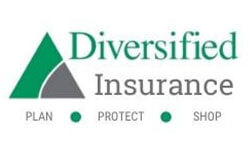How Does Life Insurance Underwriting Work?
Table of Contents
How Does Life Insurance Underwriting Work?
Life insurance applications initiate a critical evaluation process known as underwriting, which requires two to eight weeks for completion. Insurance companies conduct this assessment to determine the risk level associated with providing coverage to each applicant.
Underwriting represents the systematic method insurers use to evaluate claim probability through detailed profile analysis. Underwriters accept risk and establish premium rates while guaranteeing compensation for covered events. The evaluation encompasses medical history, prescription records, and financial stability—specifically income, assets, liabilities, and credit history. This assessment directly influences premium calculations and coverage approval decisions.
This analysis examines the complete life insurance underwriting framework, detailing each stage from initial application through final determination. The discussion covers various underwriting approaches, risk classification systems, and factors that influence application outcomes.
What is life insurance underwriting?
Life insurance underwriting operates as the foundational risk assessment mechanism within the insurance sector, establishing applicant eligibility, premium calculations, and policy specifications. This systematic evaluation process requires insurers to analyze comprehensive risk profiles before issuing coverage.
Definition and purpose
Life insurance underwriting constitutes the structured evaluation process through which insurers assess applicant risk profiles to establish policy eligibility and terms. The framework operates through two primary components: medical underwriting and financial underwriting. Medical underwriting analyzes health indicators and lifestyle variables, while financial underwriting validates coverage amounts against documented financial requirements.
Underwriters—specialized risk assessment professionals within the insurance sector—examine multiple data categories throughout this evaluation. Standard review elements include:
- Personal demographics (age, gender, occupation)
- Individual and family medical records
- Current health status and prescription documentation
- Lifestyle variables and recreational activities
- Motor vehicle violation history
- Financial documentation and credit profiles
This evaluation process establishes mortality probability during the policy term, directly impacting death benefit payout likelihood.
Why underwriting is essential for insurers and applicants
Insurance companies utilize underwriting as their primary financial protection mechanism. The process maintains insurer solvency and claim payment capacity through controlled risk exposure. PwC market analysis projects global life insurance market growth to USD 791.60 billion by 2026, with underwriting serving as a critical component in this expansion.
Underwriting maintains optimal loss ratios for insurance companies—a vital metric since inadequate risk assessment can generate claim payments exceeding premium collections. The process balances insurer profitability requirements with equitable coverage provision.
Applicants receive specific advantages through the underwriting process. The system establishes premium rates based on documented risk factors rather than generalized pricing structures. Coverage amounts align with verified financial requirements through this assessment. The process establishes transparent communication regarding risk evaluation methodologies between insurers and applicants.
The detailed personal information requirements serve specific actuarial purposes within the risk assessment framework. Underwriting enables competitive coverage terms across diverse population segments.
The life insurance underwriting process step-by-step
Application submission through final coverage determination requires multiple distinct phases. Knowledge of these procedural steps establishes appropriate expectations during the underwriting evaluation.
1. Submitting your application
Application completion and submission initiates the underwriting sequence. This legally-binding document demands precise information regarding health status, lifestyle factors, and financial circumstances. Accuracy remains essential—intentional misrepresentation may result in coverage denial or policy invalidation when discrepancies surface during review.
2. Phone interview and lifestyle questions
Representatives contact applicants within 24-48 hours following application receipt for telephone interviews lasting 30-40 minutes. These calls verify identity and gather details about medical history, current medications, family health patterns, and lifestyle practices. Preparation with physician information, treatment dates, and medication specifics expedites this discussion.
3. Medical exam and lab tests
Traditional underwriting requires paramedical examinations conducted at the applicant’s residence or workplace. Standard assessments include:
- Height, weight, and blood pressure measurement
- Blood and urine specimen collection
- Electrocardiogram (EKG) administration for older applicants
Testing identifies conditions including diabetes, elevated cholesterol, nicotine usage, and substance presence.
4. Reviewing third-party data (MIB, driving record, prescriptions)
Insurers validate application information through external data sources. The Medical Information Bureau (MIB) supplies coded medical history records functioning similarly to credit reports. Companies examine prescription histories spanning 10 years and driving records to evaluate risk indicators.
5. Risk analysis using actuarial tables
Underwriters assess complete applicant profiles against actuarial life tables—statistical models demonstrating mortality probabilities based on age, gender, and additional factors. These tables establish life expectancy calculations and corresponding premium rates.
6. Final decision and policy offer
Following information review, insurers render final determinations within 4-8 weeks post-application. Results include approval with premium rates reflecting risk classification, modified coverage terms, or denial.
Types of underwriting in life insurance
Insurance companies utilize distinct evaluation methodologies when processing applications. Each underwriting approach serves specific functions and affects policy processing procedures.
Medical underwriting
Medical underwriting assesses health history and current medical status to establish insurability. This evaluation reviews medical records, demographic data, and lifestyle elements that influence mortality risk. Insurers examine application data, medical examination results, and third-party information sources during medical underwriting. Traditional policies require blood and urine samples to detect various health conditions. Companies calculate premiums through actuarial analysis of individual risk profiles based on this medical data.
Financial underwriting
Financial underwriting verifies that coverage amounts correspond to applicant economic circumstances. Insurance companies examine financial status—income, assets, debts, and expenses—to confirm appropriate coverage levels. This evaluation prevents over-insurance, maintaining life insurance as protection rather than investment. Insurers verify premium affordability and policy amount justification relative to financial requirements.
Accelerated and simplified underwriting
Simplified issue underwriting reduces application complexity through fewer health questions and eliminated medical examinations. Insurers continue collecting substantial third-party data despite streamlined processes. Accelerated underwriting (AUW) removes traditional medical exams for qualified candidates while preserving standard pricing structures. Technology and data analytics enable rapid risk assessment, potentially reducing processing time from weeks to hours. Younger, healthier applicants typically qualify for these expedited evaluation methods.
Group vs. individual underwriting
Individual policies require detailed underwriting specific to each applicant. Premium calculations directly reflect personal health status, lifestyle choices, and risk factors. Group life insurance—commonly provided through employers—involves minimal or no medical underwriting for basic coverage. Group policies provide standardized coverage to all eligible members regardless of individual health conditions. This structure enables individuals with health concerns to access coverage that might otherwise be difficult to obtain individually.
Risk Classification Methods
The underwriting process concludes with insurers assigning risk classifications that determine premium pricing. These categories reflect statistical mortality predictions based on health assessments and lifestyle factors.
Preferred Plus
Insurance companies reserve the Preferred Plus classification (also termed “Preferred Elite” or “Preferred Best”) for applicants demonstrating exceptional health profiles. Qualification requires ideal height-to-weight ratios, normal blood pressure and cholesterol readings, absence of family history indicating early mortality from heart disease or cancer, and no high-risk lifestyle activities. Preferred Plus applicants receive the most favorable premium rates available.
Preferred
The Preferred classification applies to applicants in good health who fail to meet Preferred Plus standards due to minor medical concerns. Examples include slightly elevated cholesterol or blood pressure managed through medication. These applicants secure premium rates above Preferred Plus levels but below Standard category pricing.
Standard Plus
Standard Plus classification indicates better-than-average health that falls short of Preferred criteria. Applicants may have medical history concerns or family disease patterns that prevent higher classifications. Premium rates exceed Preferred categories while remaining below Standard pricing.
Standard
The Standard classification represents the baseline category encompassing most applicants. This classification assumes average health profiles and normal life expectancy projections. Standard rates establish the foundation for premium calculations across all risk categories.
Substandard and Table Ratings
Health conditions placing applicants beyond Standard classification result in table ratings. These ratings employ letter systems (A-J) or numerical designations (1-10), with each level adding 25% to Standard premium rates. Table A/1 increases Standard rates by 25%, Table B/2 by 50%, continuing sequentially. Some insurers extend table ratings to Table 16/P, representing a 400% premium increase above Standard rates.
Flat Extras and Special Circumstances
Flat extras represent additional charges per $1,000 of coverage applied to any risk classification. An applicant qualifying for Preferred Plus who regularly participates in scuba diving might receive a $3 flat extra per $1,000 coverage. This translates to $750 annually on a $250,000 policy. Flat extras can be temporary (typically for medical reasons) or permanent (usually for occupational hazards or recreational activities).
Conclusion
Life insurance underwriting knowledge positions applicants to make informed decisions throughout the coverage acquisition process. This evaluation system protects both insurance companies and policyholders through systematic risk assessment using medical, financial, and lifestyle data.
The underwriting framework determines premium costs through risk classifications. Health maintenance, risk avoidance, and proper medical management can secure favorable ratings that reduce long-term policy expenses. Financial underwriting verifies coverage amounts align with economic circumstances, while medical evaluation addresses mortality factors.
Accurate application disclosure remains essential. Misrepresentation can result in coverage denial or policy cancellation upon discovery. Transparent communication enables underwriters to provide appropriate terms based on actual risk factors.
This systematic evaluation protects the insurance company’s ability to meet claim obligations while ensuring fair pricing for policyholders. Understanding underwriting mechanics builds confidence when selecting coverage and completing applications, ultimately securing the financial protection your beneficiaries require.




